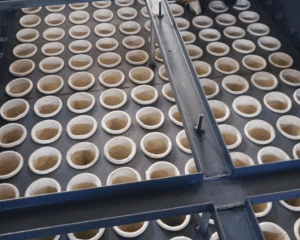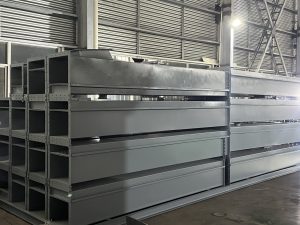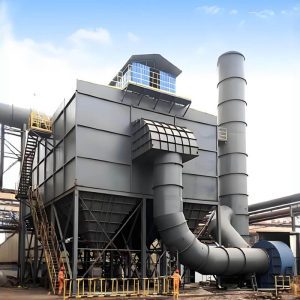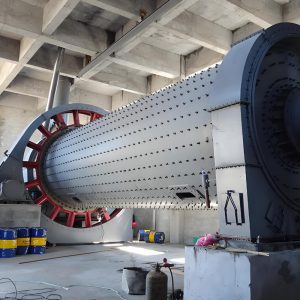The high efficiency and low energy consumption of the cement grinding process have always been the goals of production companies. "Improving mill capacity" is a constant topic. We continually strive to enhance the grinding efficiency of ball mills. Our aim is to reduce grinding power consumption and production costs while achieving maximum fineness and output.
With the implementation of new cement standards, there are now higher demands for cement fineness, specific surface area, and particle composition. Cement companies often try to increase strength by reducing the amount of blended materials or by increasing the specific surface area of cement. However, the simplest way to achieve a higher specific surface area is to lower the mill output and increase grinding time. This leads to “over-grinding,” which increases the amount of micro-fines less than 3 micrometers. The particle composition then becomes poor. Although strength does not improve much, grinding power consumption increases significantly.
This method of reducing output and increasing grinding time to enhance cement fineness or increase clinker content will inevitably raise production costs. Therefore, we must focus on internal modifications to the mill, pre-crushing materials, and optimizing the grading of grinding media to improve the content of 3-30 micrometer particles and enhance cement strength.
General Ways to Improve Cement Mill Capacity
1. Reduce the Particle Size of Incoming Materials
Reducing the particle size of incoming materials (clinker) can lower power consumption per unit of product and improve cement grinding capacity. The size of incoming material particles is a major factor affecting mill output. Smaller particles decrease the average diameter of the steel balls. With the same load, the number of steel balls increases, and so does the total surface area. This increases the contact area between the steel balls and the material, thereby improving grinding efficiency. Thus, adopting a "crush more, grind less" approach through pre-crushing can lower power consumption and enhance mill capacity.
2. Adjust the Internal Structure of the Mill
We implemented a pre-crushing process, which reduced the particle size of incoming materials. However, grinding capacity did not improve. We observed high power consumption and load on the O-Sepa classifier, with a cyclical load rate reaching 240% and a classification efficiency of only about 25%. A sieve analysis confirmed this, showing a steep curve in the first chamber and a nearly horizontal curve in the second chamber.
Clearly, the impact force in the first chamber is too strong, while the grinding capacity in the second chamber is insufficient. To address this, we added 3 tons of small steel balls to the second chamber. This adjustment increased the output to approximately 70 tons per hour. For further enhancement, we shortened the first chamber length from 5.35 meters to 4.85 meters. We moved the partition plate forward and increased the second chamber length from 7.25 meters to 7.75 meters to boost the fine grinding chamber's capacity and improve efficiency. The first chamber uses curved stepped liners to increase the drop of the grinding media and enhance impact capability. The second chamber employs a double-curved liner for grading and lifting functions, achieving an output of 80 tons per hour, improving efficiency and reducing power consumption.
3. Strengthen Material Drying
We need to improve material drying to maintain the moisture content of incoming materials between 1-2%. Excess moisture during operation can cause balling, negatively affecting mill capacity.
4. Improve Internal Ventilation
Good internal ventilation significantly impacts product quality and output. Effective ventilation allows for the timely removal of fine powder to prevent over-grinding. It also carries away heat generated during grinding, lowering the internal temperature and reducing the chance of gypsum dehydration and blockages. Good ventilation reduces buffering layers within the mill and speeds up flow rates, increasing mill output. However, excessive ventilation can enlarge dust particles, negatively affecting cement fineness. When ventilation exceeds a certain level, it can increase power consumption per unit. Practice shows that there is an optimal ventilation volume between maximum mill output and minimum power consumption.
Typically, the internal wind speed of closed-circuit mills is 0.8-1.0 m/s, while open-circuit mills require higher wind speeds due to higher temperatures. If the ball mill has ventilation issues, we can improve this by opening ventilation ports at the feed inlet and shaping the discharge chute into steps. We can also enlarge the central hole of the partition plate and the discharge grate, enhancing lock air at the discharge port. These measures address material blockage and increase ventilation area.
5. Reasonably Determine the Target Fineness of Cement Products
In actual production, if the target fineness of cement products is set too high, it can negate the effects of other measures. This restriction limits mill output and hinders efforts to reduce power consumption. Therefore, it is essential to determine the target fineness of cement products based on actual conditions.
6. Optimize the Loading of Steel Balls
Increasing the number of steel balls in the mill increases the contact area between the steel balls and the material, leading to higher mill output. Reducing the diameter of steel balls increases the surface area per unit volume, which also raises the mill output. However, power consumption tends to increase with the amount of steel balls loaded. Generally, within a certain range, power consumption is proportional to the amount of steel balls and inversely proportional to their diameter. However, excessive loading increases collisions and grinding efficiency, leading to higher power consumption. The mill should have an optimal loading of steel balls that minimizes power consumption, which should be determined through trials of optimal loading ratios and ball diameter.
7. The Role of Grinding Aids
Adding a small amount of grinding aid during the grinding process can eliminate the adhesion and agglomeration of fine powders. This accelerates the grinding process, improving efficiency and quality while reducing unit energy consumption. Using grinding aids can yield products with higher specific surface areas and reduce instances of over-grinding. Additionally, the flow rate of materials within the mill increases, shortening the residence time and affecting output fineness. In open-circuit grinding, we must adjust the internal conditions to meet the fineness requirements of the product. In closed-circuit grinding, we must keep the output fineness within normal ranges, avoiding any gradual increase in sieve residue. Otherwise, this may reduce mill output and increase the cyclical load rate, leading to overloading of the elevator and blockages, potentially causing production halts. In summary, selecting and using grinding aids is a rigorous scientific task. We must carefully consider the following five points:
Consider the properties of incoming materials and conduct small-scale comparative tests. The efficacy of grinding aids varies by material, so to achieve optimal results, we must first conduct small-scale tests under specified technical conditions and then implement the best solutions on a larger scale.
Pay attention to grinding conditions and select different types of grinding aids. Grinding aids come in gas, solid, and liquid forms with various types. Their adaptability and effectiveness vary, and requirements differ between open and closed circuits, necessitating careful testing.
Ensure that the use of grinding aids does not negatively affect subsequent processes. When using grinding aids in cement mills, consider their impact on packaging, bulk handling processes, construction, and the quality of cement products.
Focus on the source and cost of grinding aids. The economic benefits of grinding aids relate closely to their price and market supply. Companies should assess and calculate these factors before making optimal choices.
Ensure that grinding aids meet environmental protection standards. Many additives are formulated using byproducts from chemical plants, often containing harmful substances. When selecting grinding aids, do not be misled by low prices; ensure that the aids do not pollute the environment or harm workers' health. In practice, grinding aids work best in large cement mills. Given their higher costs, the benefits of reducing energy consumption and increasing output should be weighed against these costs to determine their use.
8. Optimizing the Structure and Technical Parameters of the Classifier
The key technologies of the classifier include “dispersion,” “classification,” and “collection.” Dispersion means that the material entering the classifier should be spread out as much as possible, creating space between particles. Thus, the design of the dispersal plate, its speed, dispersion space, moisture content of materials, and flow rate all directly affect the dispersion rate. Classification refers to utilizing air flow to separate coarse and fine particles during their limited time in the classifier. Factors such as gas flow rate, air speed, airflow patterns, points of gas-solid interaction, and the configuration of the classifier itself significantly influence classification efficiency. Collection refers to the classifier's ability to capture coarse and fine powders, which depends on the collection method and the design of the collection components.
In 1979, Japan's Onoda Company developed the O-Sepa classifier. This classifier retains the advantages of cyclone classifiers while employing a cage rotor with a planar spiral airflow classification principle, significantly enhancing classification efficiency. Represented by the cage-type classifier, this is known as a high-efficiency classifier and is considered the third generation of classifiers following centrifugal and cyclone classifiers.
Its classification efficiency generally exceeds 80%. However, it does not include a fine powder collection device and requires larger bag filters or electric dust collectors, increasing equipment investment and complicating process layouts, which limits its widespread adoption. The O-Sepa classifier, along with high-efficiency bag dust collectors and ball mills, reduces cyclical loads from 200%-300% in centrifugal systems to 100%-200%. When grinding cement, it can achieve over 65% of particle distribution in the 3-30 micrometer range, resulting in high classification efficiency, low power consumption, high output, and reasonable particle distribution.
9. Appropriately Increase Mill Speed
Increasing the speed is particularly effective for smaller mills. These mills have weaker impact forces due to their smaller diameters. Increasing the speed enhances the crushing capacity of the mill by:
- Increasing the number of impacts on each grinding medium within the mill.
- Enhancing the friction and grinding action between grinding media and between grinding media and the lining.
10. Lower the Temperature of Incoming Clinker
Strengthen material management. Adjustments based on clinker temperature in the storage area must be made. Operators should follow regulations strictly and be assessed accordingly. Use thermometers to monitor temperatures and prevent high-temperature clinker from entering the mill.
Implement water spraying in the cooler. Water should be sprayed in the middle of the cooler using galvanized pipes with small holes to control water flow between 500-600 kg/h. This can reduce the temperature of the outgoing cement by approximately 10℃.
While these spraying measures effectively lower temperatures, they have side effects. Water vapor can carry clinker dust into the crusher at the cooler's end, forming bindings on the inner walls, which can eventually disrupt normal crusher operation. Therefore, regularly monitor clinker temperatures and adjust the water spraying accordingly. Periodically, clean the clinker crusher.
11. Characteristics and Grindability of Incoming Materials
The types and proportions of incoming materials directly affect mill output, quality, and specific energy consumption. Any blended materials used in cement will generally reduce strength, but the degree of reduction varies based on the activity of the materials. Among commonly used blended materials, slag has the highest activity.
However, if the specific surface area of slag is below 300 m²/kg, its advantages in cement strength do not manifest. The grindability of materials significantly impacts mill output and product quality. National standards define grindability coefficients based on the specific energy required for grinding. Since most enterprises lack specialized testing equipment, small-scale grinding tests comparing materials with standard sand can help determine grinding process parameters. After measuring the grindability coefficients of raw and fuel materials, we can adjust the loading and grading of the grinding media based on scientific methods.
The grindability coefficient correlates strongly with material structure. Even within the same material, grindability coefficients can differ. For example, dense and well-crystallized limestone has a low grindability coefficient and is harder to grind. The grindability of clinker depends on the composition of its minerals and the cooling environment. Evidence shows that high KH and P values, a high C3S content, low C4AF, and rapid cooling yield a more brittle texture and higher grindability coefficients. Conversely, low KH and P values, high C2S and C4AF contents, and slow cooling lead to denser, tougher clinkers with lower grindability coefficients, making them harder to grind.
The grindability coefficients of slag can vary significantly. Slag that undergoes rapid cooling after being produced is often porous and fine, yielding a higher grindability coefficient of about 1.2-1.3. In contrast, slag that cools significantly before being rapidly quenched forms denser, heavier crystalline particles, resulting in a lower grindability coefficient of about 0.7-0.9, making it more challenging to grind.
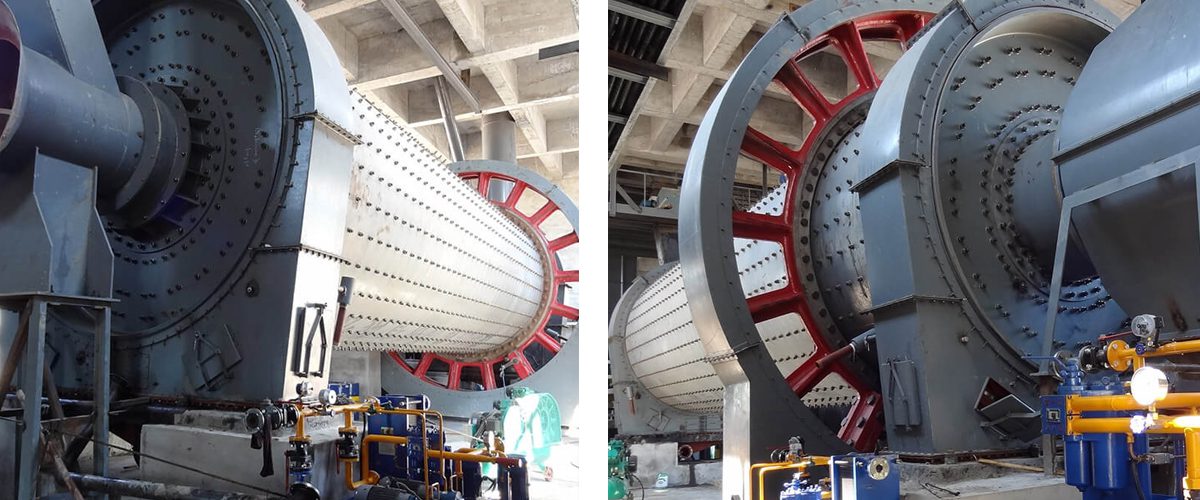
Other Ways to Improve Cement Mill Capacity
1. Basis for Reasonable Adjustment of Grinding Media
The reasonable adjustment of grinding media depends on the physical and chemical properties of the ground materials, the grinding method, and the required product fineness. Sieve residue analysis is an effective means to judge whether the grading of grinding media is reasonable.
The basis for adjusting grinding media includes:
- When the particle size of incoming materials is fixed, smaller steel balls have a larger overall surface area than larger steel balls, increasing their contact opportunities with materials. Conversely, larger steel balls provide greater energy and impact crushing capacity. For materials with larger average particle sizes and higher hardness, larger average ball diameters should be used; for softer materials, smaller diameters are suitable. For smaller diameter mills, smaller average ball diameters are used.
- If the grindability of incoming materials is good, small steel balls can be selected; if grindability is poor, larger steel balls are necessary.
- The selection of ball diameter also relates to the amount of material passing through the mill per unit volume. In closed-circuit grinding, the return of coarse particles increases the throughput per unit volume, allowing for some cushioning of the steel balls during impact. Therefore, larger steel balls are preferred in high return scenarios, while smaller balls are selected in other cases.
- If the output fineness requirement is fine, small steel balls should be used; otherwise, larger ones are appropriate.
- Single-chamber mills generally use steel balls, while two-chamber mills typically use steel balls in the first chamber and steel sections in the second.
- The sizes of the grinding media must be well-matched. Steel ball specifications typically range from 3 to 5 levels, while steel sections range from 2 to 5 levels.
- The proportion of different-sized steel balls can follow the principle of "small at both ends, large in the middle." When using two types of steel sections, each should occupy half.
- While meeting particle size requirements, the average particle size should be minimized to increase contact area and impact frequency, with the diameter-to-length ratio of steel sections kept small due to rapid radial wear. The difference between the length and diameter of steel sections should be around 5 mm.
2. Reasonably Adjust the Return Rate and Grading of Grinding Media
In general, to reduce over-grinding, the filling rate of the first chamber in closed-circuit grinding is often higher than that of the second chamber, which accelerates material flow rates. A return rate of 100-150% typically yields the highest hourly output. If the return rate is too high, although the fineness may meet standards, the specific surface area decreases. As grinding media wear down during production, the filling rate decreases. Initially, this is not observed as a decline in hourly output but as an increase in return rates, a reduction in cement surface area, and a drop in 3-day compressive strength. When the return rate becomes too high, it leads to over-saturation, which then causes a drop in hourly output. Therefore, it is essential to determine whether to supplement grinding media based on return rates and specific surface areas. If hourly output drops significantly, it is necessary to clear the mill and redo the grinding media grading.
3. Grinding Media in Fine Grinding Chambers
Grinding media are one of the main measures for optimizing the mill. Currently, foreign cement mills in fine grinding chambers tend to use small steel balls instead of steel sections because steel sections consume about 20-30% more energy.
High-quality small steel balls wear less than steel sections and produce more spherical cement particles, which are superior to those produced by steel sections. However, steel sections have their advantages, such as faster material flow rates and preventing cement agglomeration in the mill. In recent years, there has been ongoing debate about whether to use steel sections or steel balls in fine grinding chambers. Some advocate for steel sections, while others prefer steel balls. This decision requires specific analysis from a grinding perspective. The grinding function of the mill encompasses both crushing and grinding. Optimizing mill conditions involves balancing these two capabilities to enhance grinding efficiency, ensuring that both output and product fineness are at acceptable levels. Correctly analyzing the matching of crushing and grinding capabilities under different conditions is crucial to determining whether to use steel sections or steel balls in fine grinding chambers.
- Each chamber of the mill possesses both crushing and grinding functions, though to different extents. The primary function of the fine grinding chamber is grinding, and the grinding capabilities of small steel balls and sections differ. The efficiency of grinding depends mainly on the contact surface area between the grinding media and the materials. A larger contact surface area provides more grinding opportunities, leading to higher product generation rates within a unit of time. Given equal quality, sections have a higher contact surface area due to their linear contact nature compared to balls. For single chambers, with the same loading of grinding media and the same feed material, the output per unit time in a section chamber is higher than in a ball chamber, as proven by grinding theory and practical application. It is worth noting that the current sizes of grinding media in fine grinding chambers are generally too large compared to the materials, partly due to restrictions on sieve width.
Conclusão
Practice has proven that the main pathways to achieving high-quality, energy-efficient, and high-output cement grinding include: "adding pre-crushing processes before grinding, making structural improvements within the mill, and selecting efficient classifiers after grinding." Pre-crushing is the "prerequisite," internal modifications are the "foundation," and optimal selection after grinding is the "guarantee." For more information or inquiries, please contactar-nos!

